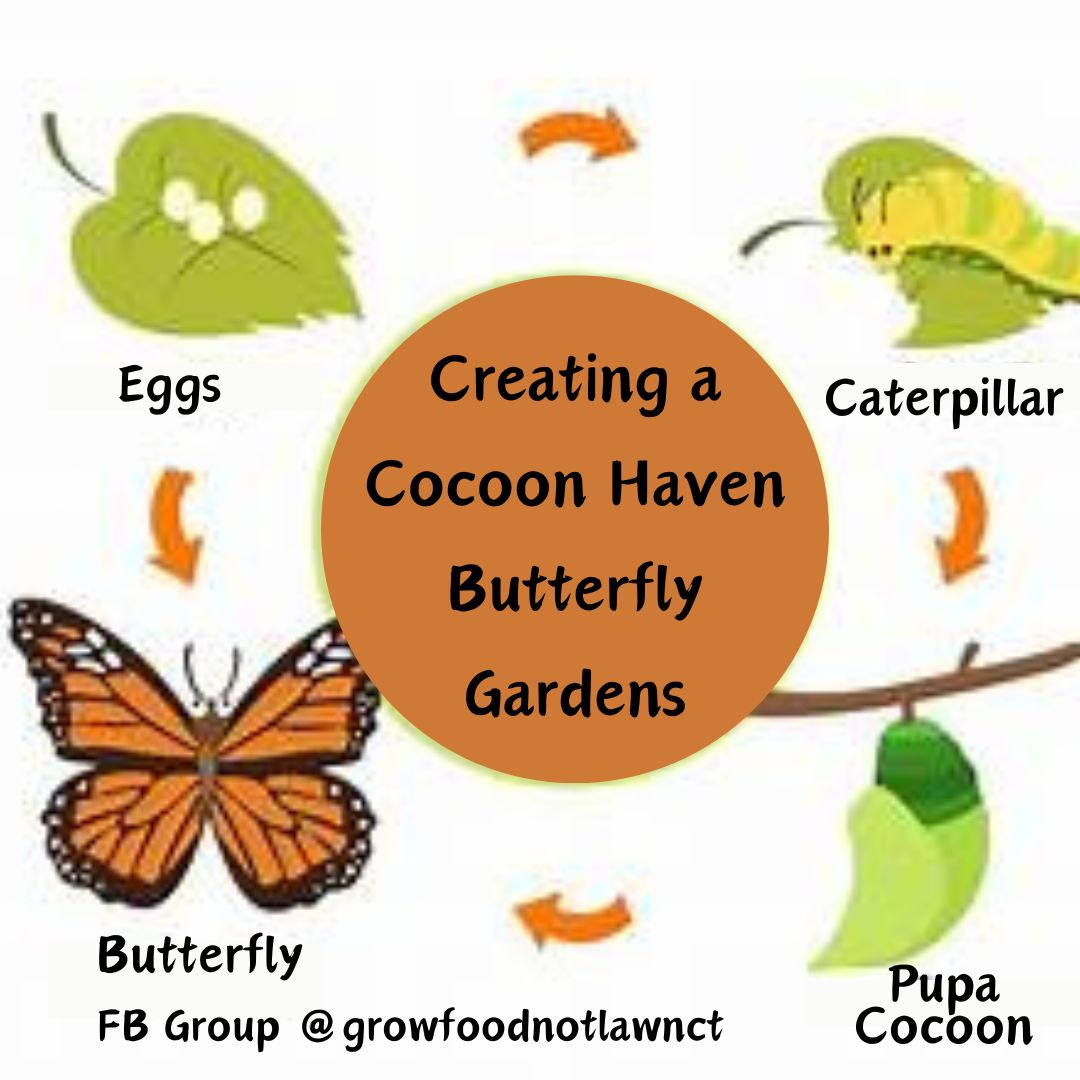Here are some tips for creating a cocoon haven – butterfly garden. To guarantee a thriving environment in your garden and support the complete life cycle of caterpillars transforming into beautiful butterflies it’s crucial to incorporate a mix of host and plants for caterpillars and nectar plants for adult butterflies. Here are some gardening tips tailored to attract these enchanting creatures to your garden.
Start with Host Plants for Caterpillars:
- Milkweed: This is essential for Monarch butterflies as it’s the sole host plant for their caterpillars
- Parsley: A host plant for the Eastern Black Swallowtail, providing shelter and food for its caterpillars. Other plants in the carrot family, such as dill and fennel, can also serve as hosts.
- Nettles: Nettles are host plants for various butterfly species, including the Red Admiral and Milbert’s Tortoiseshell. While they may seem like weeds, they play a fundamental role in supporting butterfly populations.
- Violets: These are host plants for butterflies like the Great Spangled Fritillary and the Variegated Fritillary, providing nutrition for their caterpillars.
Then add Nectar Plants for Adult Butterflies:
- Butterfly Bush: Varieties like ‘Black Knight’ and ‘Pink Delight’ are a popular choice for attracting butterflies with their fragrant flowers.
- Purple Coneflower: Loved by many butterfly species, including the Eastern Tiger Swallowtail and the Silver-spotted Skipper, for its nectar-rich blooms.
- Aster: Late-season bloomers like New England Aster provide essential nectar sources for butterflies preparing for migration.
- Joe-Pye Weed: This tall perennial is a favorite of many butterfly species, including the Eastern Tiger Swallowtail and the Great Spangled Fritillary, offering ample nectar on its clustered flowers.
Include These Helpful Tips:
- Provide Shelter: In addition to food plants, caterpillars also need shelter to feel safe and protected. Incorporate a variety of plant types, including shrubs and trees, to offer different levels of cover.
- Maintain Habitat: Regularly maintain your garden by watering, weeding, and pruning as needed to keep plants healthy and thriving. Healthy plants are more likely to attract caterpillars and provide them with the nutrition they need.
- Diversity: Aim for a diverse range of plants to attract a variety of butterfly species. Different butterflies have different preferences, so offering a variety of plants ensures you cater to a broader spectrum of species.
- Avoid Pesticides: Pesticides can harm caterpillars and butterflies, so use organic gardening methods to keep your garden a safe place for them.
Finally, Observe and Learn:
Spend time observing caterpillars in your garden to learn more about their behavior and preferences. This will help you enhance your gardening skills to better support them.
By following these tips and planting a variety of host plants, you can create an inviting habitat for caterpillars and increase the chances of witnessing the magical transformation into butterflies in your own backyard.
Let’s garden together, I’m rooting for you. Email LeeAnn or Call Me
Follow me on FB Grow Food Not Lawn CT | Empty Nesters Lifestyle CT | Realtor LeeAnn D
Check out my latest blogs

 Facebook
Facebook
 X
X
 Pinterest
Pinterest
 Copy Link
Copy Link


